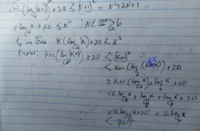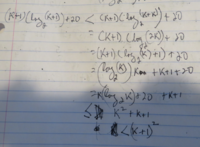allegansveritatem
Full Member
- Joined
- Jan 10, 2018
- Messages
- 962
Here is the exercise: ( I am being asked to find the smallest possible positive integer for which the following statement is true:
 I have already tested this and find that 6 is the magic number, 6 and higher which will make n true.
I have already tested this and find that 6 is the magic number, 6 and higher which will make n true.
Here is the best of many tries:

Can anyone make anything out of this? Seems to me I might have come to the QED but maybe not. I'm not steady on my feet with these induction exercises.
Here is the best of many tries:

Can anyone make anything out of this? Seems to me I might have come to the QED but maybe not. I'm not steady on my feet with these induction exercises.

